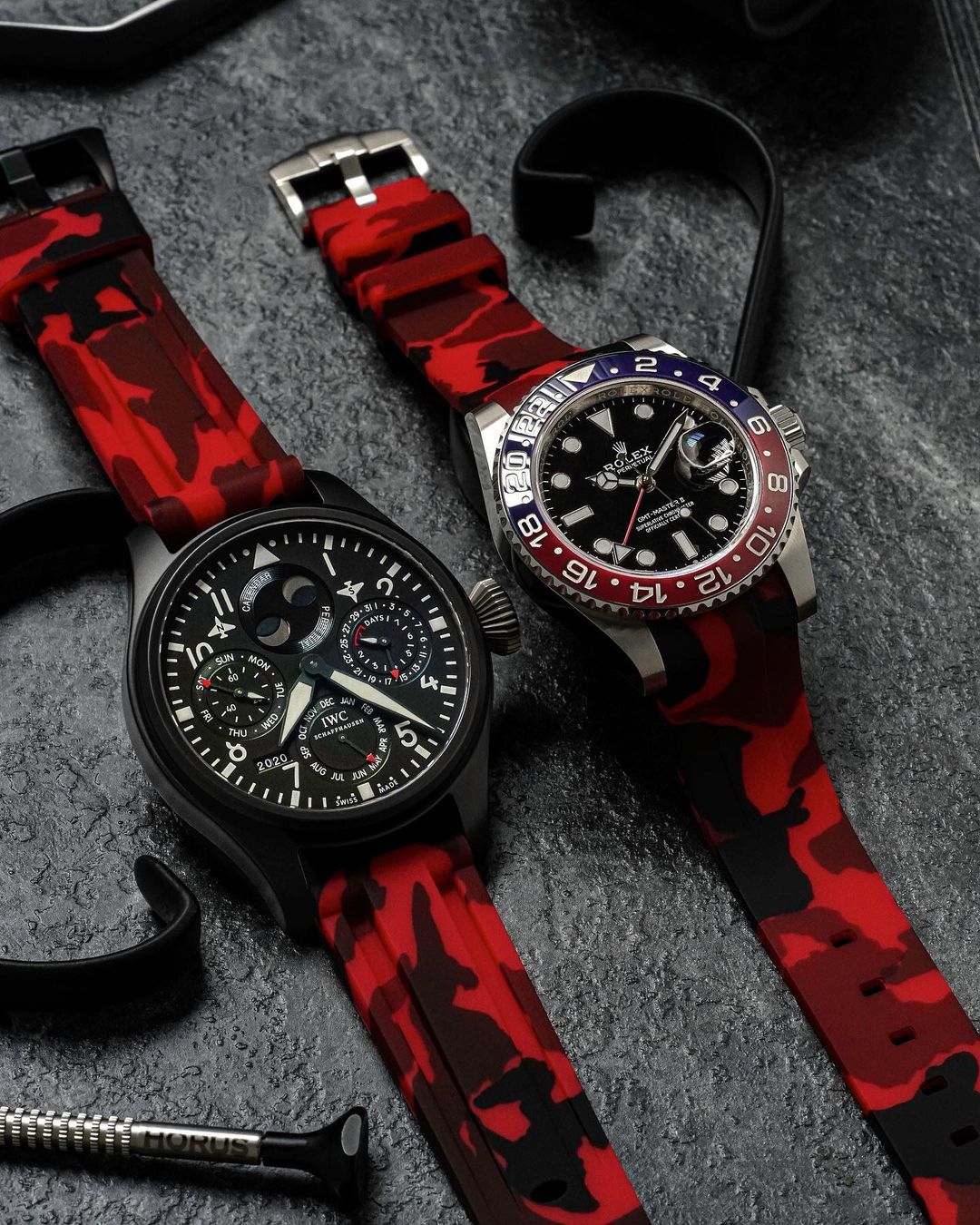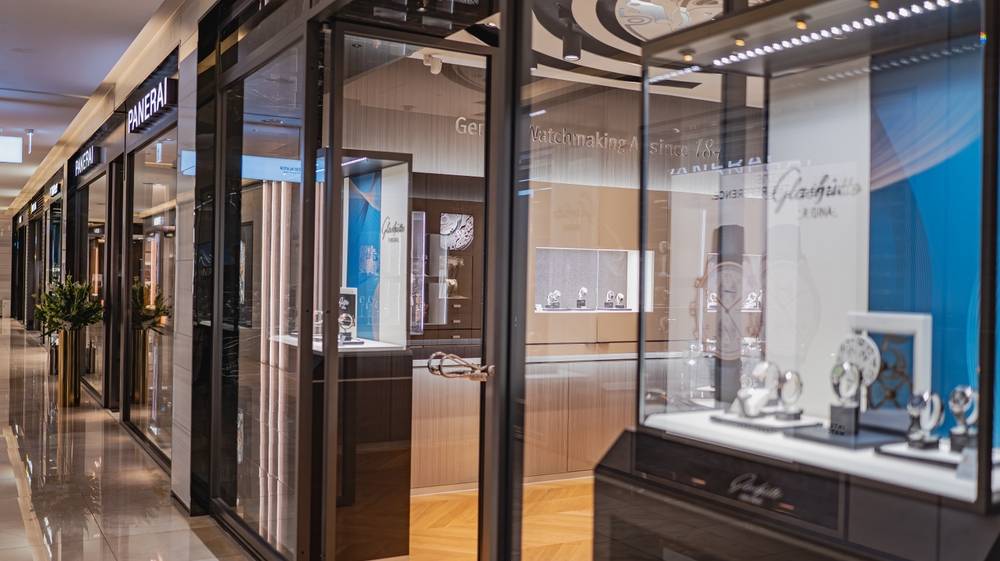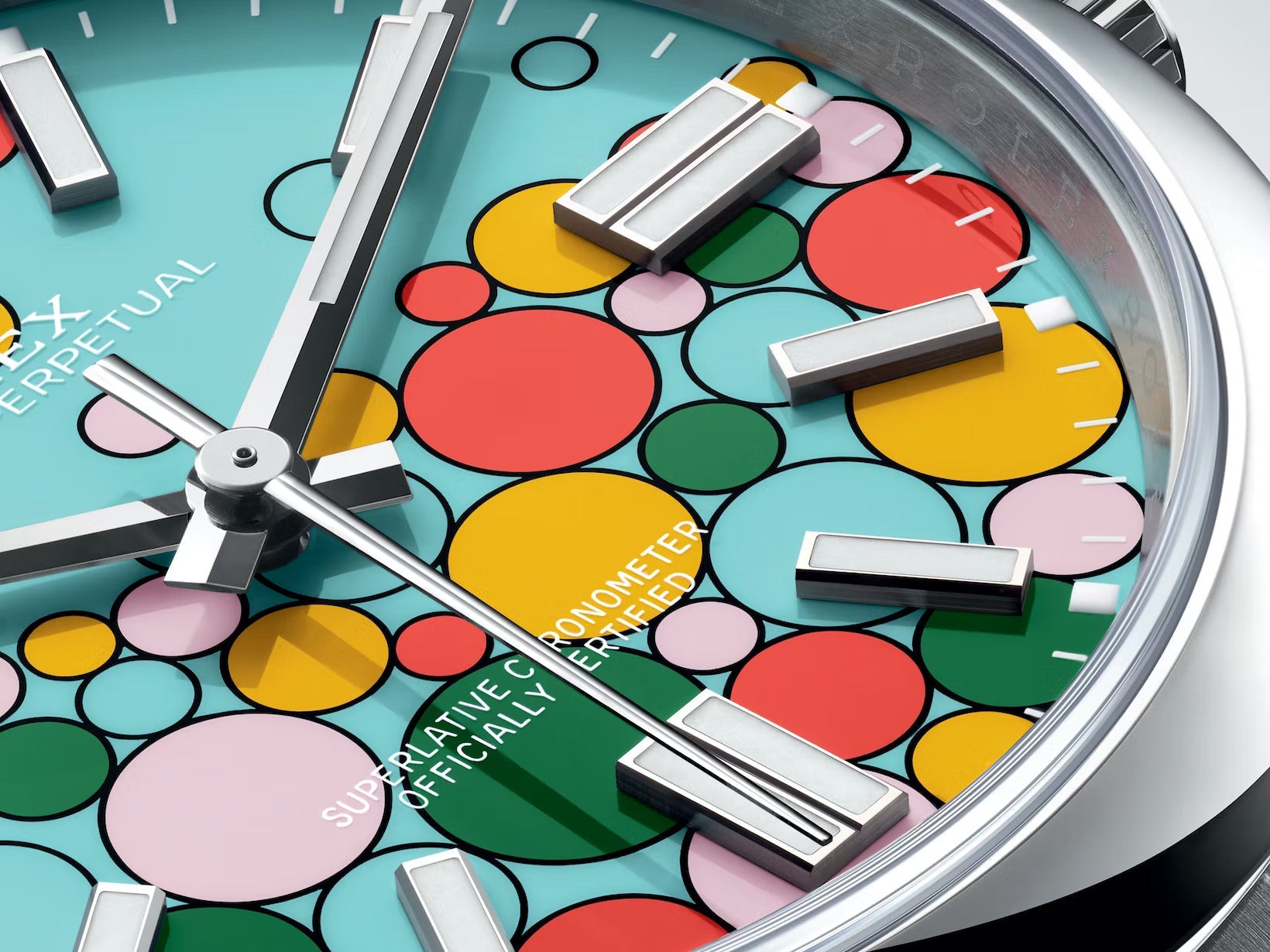March 05
How to Spot a Fake Luxury Watch

Within the world of luxury items, there lies a constant and menacing foe lurking in the shadows, waiting to spoil someone’s experience, and it is the dreaded fake. As wide-ranging as one could imagine, the counterfeit industry spans items like handbags to shoes to cars, our beloved watches, and just about everything else in between. However, there does lie some defenses that can populate your arsenal in order to tackle this menace and reduce your chances of being scammed, duped, or taken advantage of, and it is the knowledge on what to look out for when trying to determine the legitimacy of a luxury watch. While hands-on experience is perhaps the best teacher, this article will hopefully be the starting point from which you can build your knowledge on spotting fake luxury watches.
The Dial and Hands
First and foremost, the key to any luxury timepiece’s value is in its dial and hands. With vintage watches, dial originality is the be-all and end-all, and with fake watches, the dial and hands are usually the first place you should look to determine if a luxury watch is real or fake. The lettering, branding, and any other printed or painted inscriptions will always be perfect on an authentic luxury timepiece. On fake watches, these are usually off, or the font is slightly wrong. While high-quality fakes sometimes feature passable dials, the devil is in the details, such as the luminescent material. Is it painted onto the hour markers and hands evenly and cleanly? Are the hands and hour markers well-finished, or are they clearly just stamped metal? These small details usually require a jewelers loupe but can be crucial means of determining the originality of a dial and its hands.
Also, it must be stated that just because a watch has a fake dial and hands does not mean the entire watch is fake. For example, some watches may have custom dials if a previous owner wanted a new dial color, or if they had to replace the old dial due to damage, and could not afford an authentic replacement. However, with that said, determining a luxury timepiece’s dial as authentic will be a massive first step, and the same goes if it is not authentic.
The Case, Bezel and Crown
After you have determined if the dial, hands, and dial furniture are authentic, you will need to move to the external components of the watch, such as its case, its bezel (if it has one that is not a physical part of the case, like a Rolex Submariner) and its winding crown. Beginning with the bezel, not every watch will have a bezel, but for the ones that do, you will have to determine if its bezel is authentic. For vintage watches, this is a minefield and will require genuine expertise. It is a little bit more straightforward for modern luxury watches as the workmanship, font size, material, and overall finish on fake bezel inserts are usually suspect on fake watches. On authentic luxury timepieces, their bezel insert will fit the bezel perfectly, the surface will be nicely finished, and the font used will be correct. Refer to pictures of confirmed authentic watches for comparison if needs be.
After confirming the bezel was either original and authentic, a service replacement, or a fake, the next piece of the puzzle that you should delve into is the watch case. Beginning with the surface finish and overall shape of the case. By comparing to a picture of a confirmed authentic watch, check the crown guards and their shape. Do they extend long enough, are they rounded or flat where they need to be and are they thick enough? Next, look at the mid-case, is it shaped as it should be? Finally, look at the case dimensions if you can. The measurements for most authentic luxury watches are in the public domain, so don’t be afraid to check if the watch is the right size. It might seem obvious, but with the different movements that fakes have, they can often be thicker or too wide.
Finally, when checking the externals, you will want to check the winding crown. For the most part, they feel frictionless to operate and engage with the hands almost instantly when changing the time. Winding the watch should also be painless. This won’t be the case with a fake, unless it has a high-quality movement, which some expensive fakes do contain.
The Bracelet and Clasps
Moving on from the watch case, the next part of the puzzle is the bracelet and its clasp. While leather and rubber strap luxury watches could easily feature a replacement strap, or a custom strap like one of our own Horus Straps, metal bracelets are usually a good tell for a fake watch. Does it feel high quality, heavy and well-built, or is it light, jangly, and poorly constructed?
Next, go to the clasp and open it. Is it smooth, secure, and nicely finished? Are the stamps, markings, and inscriptions clear, well-defined, and legible? Fakes will often have the stamps in the wrong place, the wrong font, or the wrong size. So again, compare these to a confirmed authentic timepiece to make your life that bit easier.
Boxes, Papers, Booklets, and Other Accessories
Finally, one of the easiest tells for detecting a fake luxury watch is the set that accompanies it. Are the box, papers, hang tags, booklets, and anything else well made? Is the branding correct, is everything the correct color, and are they well made. One great tell is the lining on the inside of the watch box. Check the corners and lines where the lining meets. The lining will meet flush in authentic luxury watch boxes and be well-cut. On fakes, they will jagged and not crisp. Excess glue may also be exposed. Again, refer to pictures if you have not handled enough of these accessories to tell.
Fakers will often use fake accessories as a means to dupe targets into believing the watch they are buying is authentic, with fake purchase receipts the norm. In addition, some brands use black light-activated print on their warranty cards, like Rolex, as a means to make their warranty cards harder to fake. This is another thing to check, but not a clear tell. As a matter of fact, nothing is, and warranty cards, or papers as we call them in the industry, are NOT a determination of authenticity. If a fake watch can be produced, so too can a piece of paper or a plastic card.
Buy the Seller... Always
Perhaps the best way to tell if a watch is authentic or fake, is by buying the seller. Are they reputable, are they well-known, are they well-established in the industry with significant reviews, and are they someone you can trust? While you may determine that a watch is authentic, if the seller is unscrupulous or the deal is too good to be true, you should walk away. There will always be another luxury watch on the market for you to buy. Granted, luxury watches are expensive, being scammed is far more expensive, and certainly something to avoid at all costs.
All watches pictured in this article are authentic.
March 05
All postsFeatured Posts

December 14
What to Buy as a Christmas Gift This Year (For Watch Collectors)

November 13
Cartier Santos 100 XL: The Path to New Heights

March 27